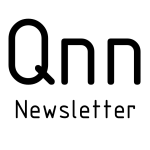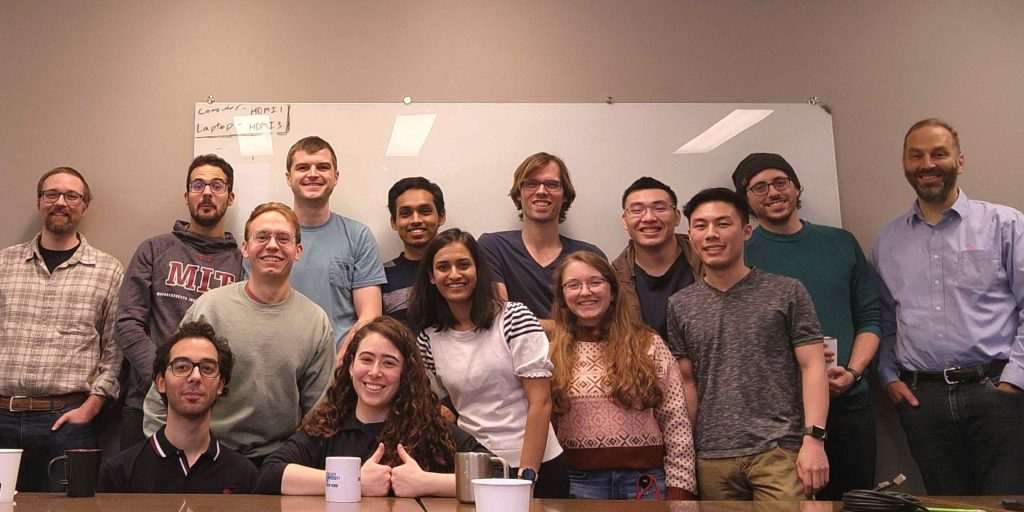 Welcome to another QNN Newsletter! We have had a couple departures and some arrivals, as well as some exciting papers come out. Karl spent a few days with students at Jefferson lab in Virginia and at Fermilab in the Chicago area, working on interacting with the high-energy physics community, where there is some interest in the superconducting nanowires for electronics in their detectors. We also were happy to host a visit by Prof. Billy Putnam from UCDavis, our collaborator on both a DOE and NSF program related to free electrons coupled to nano-optical systems.
Welcome to another QNN Newsletter! We have had a couple departures and some arrivals, as well as some exciting papers come out. Karl spent a few days with students at Jefferson lab in Virginia and at Fermilab in the Chicago area, working on interacting with the high-energy physics community, where there is some interest in the superconducting nanowires for electronics in their detectors. We also were happy to host a visit by Prof. Billy Putnam from UCDavis, our collaborator on both a DOE and NSF program related to free electrons coupled to nano-optical systems.
Best regards,
Karl and Donnie
Comings and Goings
The last few months we’ve welcomed the following new group members:
- Valentin Karem, Visiting Student
- Sahil Pontula, UROP
The following members have now left and become alumni group members:
- Shruti Nirantar, now a visiting scientist at the NASA Ames Research Center
- Torque El Dandachi, now working at Microsoft as a Quantum Simulation Engineer
Theses!
T. El Dandachi, “Efficient simulation of Large-Scale Superconducting Nanowire Circuits,” M.Eng. Thesis, Massachusetts Institute of Technology, 2023.
A. Bechhofer, “Geometrical Optimization of Planar Nano Vacuum Channel Transistors,” M.S. Thesis, Massachusetts Institute of Technology, 2023.
Publications (11/1/22 – 02-28-23)
A. Buzzi, M. Castellani, R. A. Foster, O. Medeiros, M. Colangelo, and K. K. Berggren, “A Nanocryotron Memory and Logic Family.” arXiv, Dec. 15, 2022. doi: 10.48550/arXiv.2212.07953.
R. A. Foster, M. Castellani, A. Buzzi, O. Medeiros, M. Colangelo, and K. K. Berggren, “A Superconducting Nanowire Binary Shift Register.” arXiv, Feb. 09, 2023. Accessed: Feb. 17, 2023. [Online]. Available: http://arxiv.org/abs/2302.04942
S. I. Davis et al., “Improved Heralded Single-Photon Source with a Photon-Number-Resolving Superconducting Nanowire Detector,” Phys. Rev. Applied, vol. 18, no. 6, p. 064007, Dec. 2022, doi: 10.1103/PhysRevApplied.18.064007.
Y. Hochberg et al., “New constraints on dark matter from superconducting nanowires,” Phys. Rev. D, vol. 106, no. 11, p. 112005, Dec. 2022, doi: 10.1103/PhysRevD.106.112005.
E. Batson et al., “Reduced ITO for Transparent Superconducting Electronics.” arXiv, Dec. 16, 2022. doi: 10.48550/arXiv.2212.08573.
E. Piatti et al., “Reversible Tuning of Superconductivity in Ion-Gated NbN Ultrathin Films by Self-Encapsulation with a High-k Dielectric Layer,” Phys. Rev. Applied, vol. 18, no. 5, p. 054023, Nov. 2022, doi: 10.1103/PhysRevApplied.18.054023.
P. D. Keathley, S. V. B. Jensen, M. Yeung, M. R. Bionta, and L. B. Madsen, “Uncovering extreme nonlinear dynamics in solids through time-domain field analysis,” Phys. Rev. B, vol. 107, no. 5, p. 054302, Feb. 2023, doi: 10.1103/PhysRevB.107.054302.
Talks (11-01-22 to 02-28-23)
K. K. Berggren, “The Cryotron Reborn: Superconducting-Nanostrip-Based Electronics,” presented at the Applications of Superconducting Electronics and Detectors Workshop, Newport News, VA, Nov. 30, 2022.

Shruti’s farewell get together on January 6th. From right to left: Karl Berggren, Stewart Koppel, Matthew Yeung, Lu-Ting Chou, Emma Batson, Maurice Krieelart, Shruti Nirantar, DJ Paul, Adina Bechhofer, Owen Medeiros, John Simonaitis, Marco Colangelo, Torque El Dandachi, and Donnie Keathley.